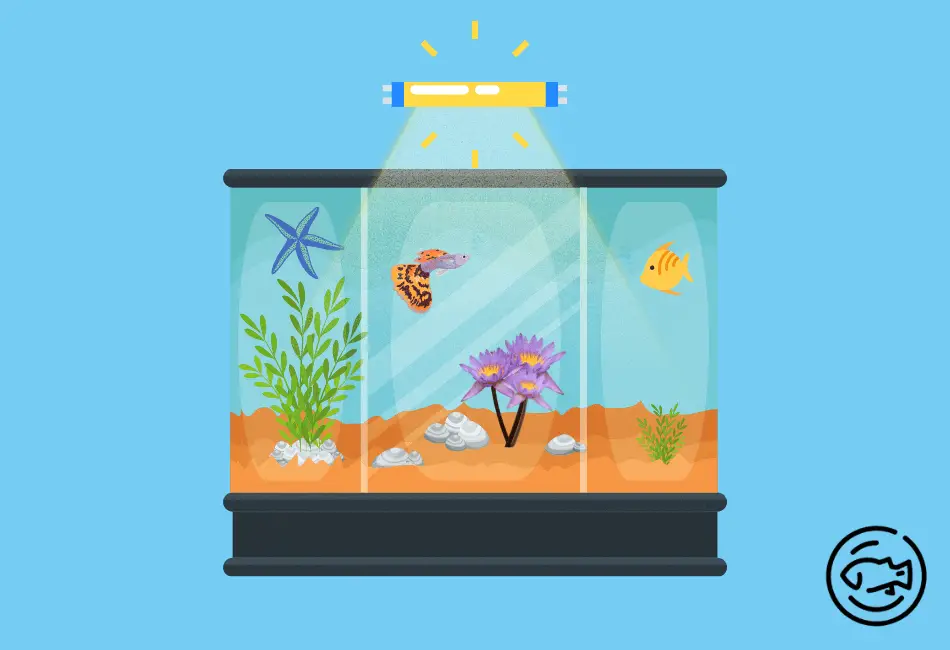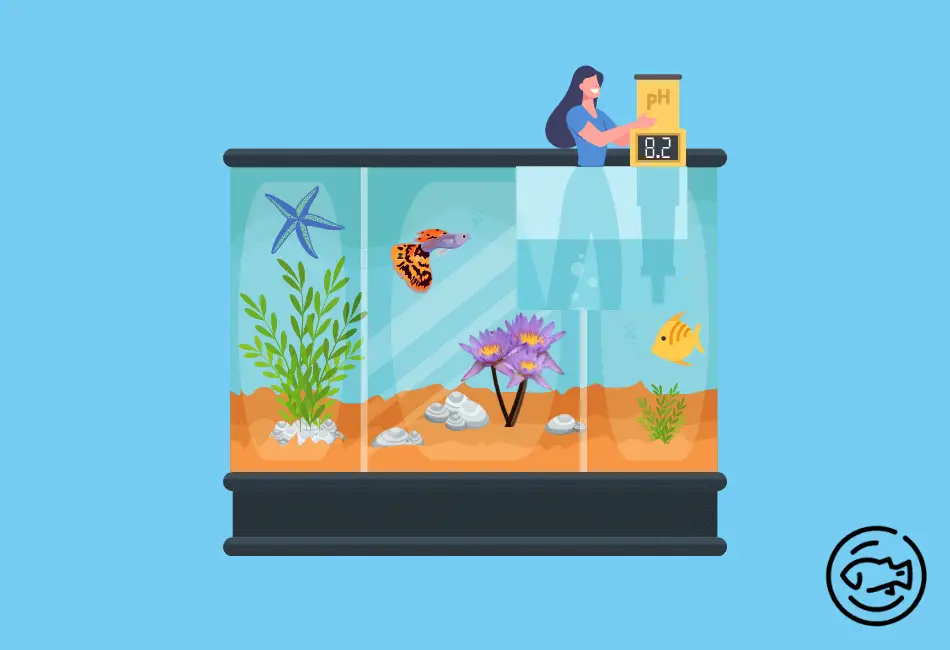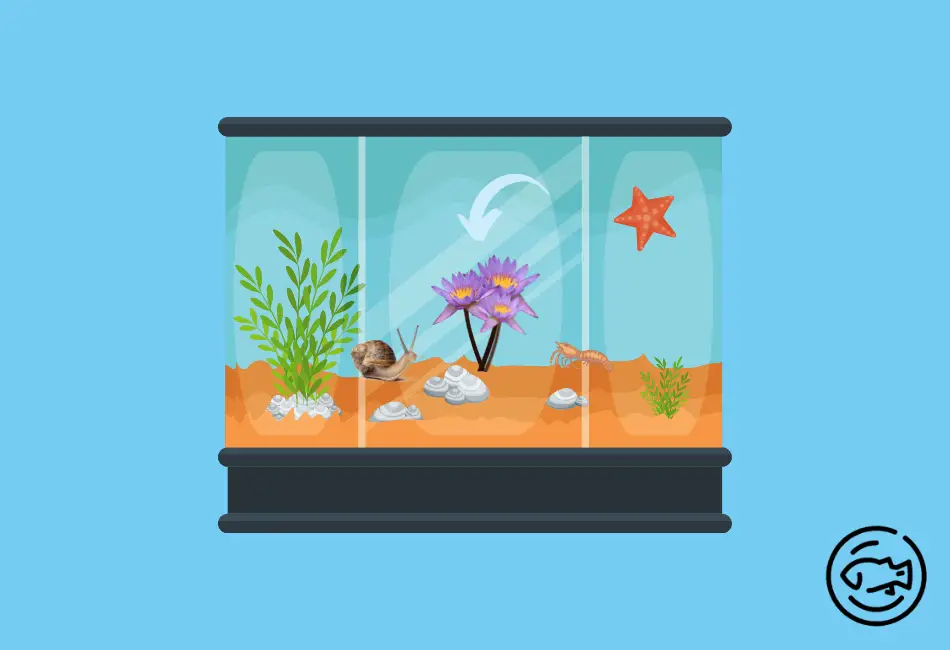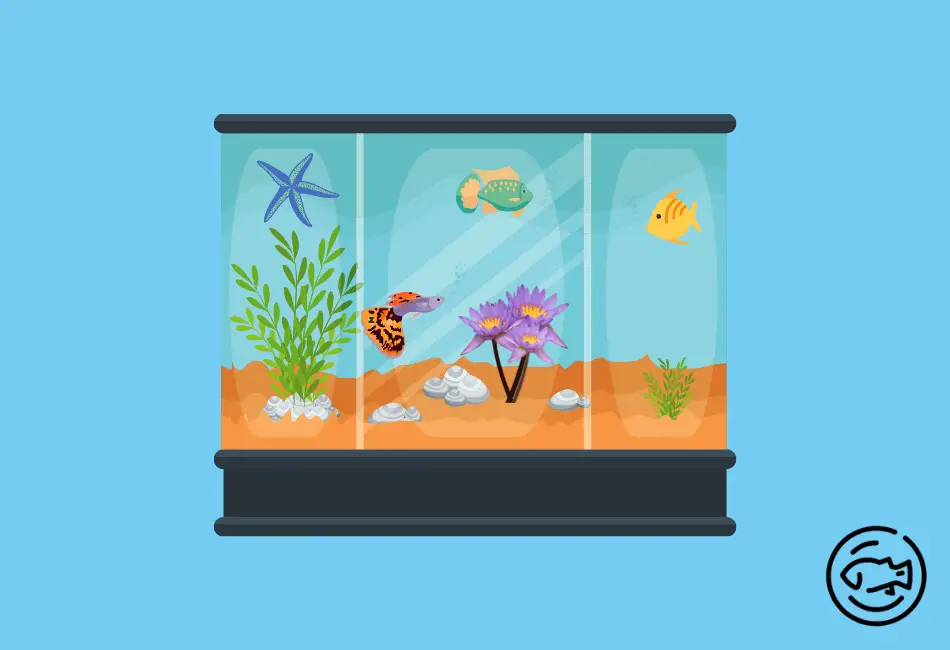They are the perfect background plant and are mainly found in many parts of Southeast Asia. They don’t take up much space, and once you get used to them, their presence will be felt even when they’re not present in your aquarium!
Dwarf aquarium Lilies are one of the most commonly grown plants in aquaria. They’re easy to take care of, and when it comes time to grow these little beauties at home or give them as gifts – people will be able to enjoy them.
Follow this guide to know all about these Dwarf Aquarium Lilies.
Dwarf Aquarium Lily

The Dwarf aquarium Lily is a beautiful aquatic plant that can be found in many parts of Southeast Asia and even Australia. It’s scientifically named Nymphaea Stellata because its classification has been confusing for some time now.
The Dwarf aquarium plant or Nymphaea Stellata has unique leaves that grow in a triangle shape. As it grows, the plant will change from green to red and pink as they age before slowly dying off overtime or being replaced by new triangular leaves when their old leaf falls off. These stunning live aquatic plants can reach up to 31 inches (80 cm) tall.
Some people think that this hardy plant is just for looks, but it also houses animals like nano fish and dwarf shrimp! It helps keep your tank clean by eating organic waste.
How To Care for Dwarf Aquarium Lily

The Dwarf Aquarium plant is easy to manage if you maintain your tank properly with appropriate tank requirements, water parameters, and lighting conditions:
Tank Requirements

This sturdy plant is just the right size to fit any tank, no matter how big or small.
Dwarf aquarium plants need a lot of room to grow, and if you want your lilies’ natural growth with no pruning, then 20+ gallons might be the right size.
Otherwise, regular trimming will work fine in smaller tanks, though not as effectively at maximum quantities per batch. They’ll get top-heavy from all their new leaves growing so quickly without being cut back once every couple of weeks.
Water Parameters

The ideal range for the Dwarf Aquarium Lilies inside the fish tank is 22 – 28 degrees Celsius with 2-12 dGH (or 200ppm).
You should also maintain a pH level between 6 to 7.5 for this plant to adequately settle down in your fish tank.
Do proper research according to the tank mates that you have along with the Dwarf Lilies before going forward with these settings.
Lighting Conditions

If you want your Dwarf Aquarium Lily to be comfortable, then they must receive ample sunlight. If this isn’t possible in the location where they are, then consider using artificial lighting for 10-12 hours every day.
Fluorescent lights are best since these do not emit any UV rays, but can damage their leaves over time.
Maintenance

Dwarf aquarium Lilies are easy to care for, but there are a few things that you should know.
The best way to light your tank is artificial lighting. Fluorescent lights are inexpensive and very efficient, but they are not as effective as putting the plant in sunlight.
So if you can keep this plant by a window with plenty of natural sunlight instead, it’ll be just fine! Once the roots start sending out pads towards the top of their tank (maybe even before), remove some to avoid blocking any light source above them.
To ensure that your plant is thriving, ensure that the temperature is at least 72° F (22 °C) and only bury a third of the dwarf aquarium lily bulb base in the substrate.
Luckily, it is likely for you that you will not be injecting CO2 into a Dwarf Lily aquarium. If your plant starts growing at an alarming rate, then there could be one explanation: It needs additional nutrients!
You can give them by using root tabs or liquid fertilizers, which will help with their growth tremendously while also giving off great effects.
Also Read: How To Remove Tannins From Aquarium Water?
How To Plant Dwarf Aquarium Lily

Make sure you place the aquarium lily bulbs on your aquarium’s substrate and bury only a third of it at most. You can even evade burying altogether since; eventually, enough soaking will occur for this tactic to work well without worrying about rot issues as long as nutrients continue reaching their roots via water circulation so that they stay wet throughout any dry spells which may come up between watering sessions.
When the bulbs initiate sprouting, you can bury leaves a third in the substrate, so the fish don’t push around the aquarium lily bulb. Eventually, roots grow into the ground, and the lily anchors its place permanently.
Your Dwarf Aquarium Lily might be fake or dead; if you do not see any of them grow, then it’s best to replace the baby plant attached, with a new one that will grow properly like most live aquatic plants.
There are many types of bacteria and mildew that can grow on these aquarium Lily bulbs, but don’t worry because they’re all harmless. The biofilm will come off in time with help from your aquarium’s fish like the shrimp or the algae eaters.
How To Propagate Dwarf Aquarium Lily

You can propagate your Lily by cutting off young shoots and planting them in new areas where you want them to grow. With time, the Lily will likely send out more than one set of offshoots from its stem as it grows.
Propagate with care and look for any sign of malnourishment if your Lily is not sending off the shoots. In that case, you would need to enrich the nutrition of your dwarf water lily.
Ideal Tank Mates for Dwarf Aquarium Lilies

The best tank mates in your aquarium for the Dwarf Aquarium Lilies, which you want to introduce to the tank, are shrimp, snails, and algae eaters.
Because these fish can help eradicate or eat a coating of biofilm that inherently develops on the Dwarf Lily’s bulb when it is growing.
So, it is crucial that you add these types of tank mates to your aquarium, which will complement the Dwarf Aquarium Lily.
Where to Place Dwarf Lily in the Aquarium

Ideally, it would be best if you planted your aquarium plant in a central spot so it can contribute to the nitrogen cycle by consuming organic waste compounds and turning that into nutrients for its neighbors.
Though the plant initiates small, it will develop to cover a significant amount of your aquarium, so it is best to place it centrally and not on the rim or either side of the aquarium.
Conclusion
These quick care tips should help you keep your dwarf aquarium lily healthy and thriving.
Keep the temperature above 72° F (22° C) and give it plenty of light, either direct sunlight or fluorescent light, for 10-12 hours per day.
Once the lily pads form at the top, remove any that might be blocking sunlight (if necessary). If your plant isn’t sending off-shoots in its adulthood, it may be malnourished – in which case you can try fertilizing it with balanced nutrients.
With a little bit of care, your Dwarf Aquarium Lily will bring beauty and life to your tank for many years to come!


